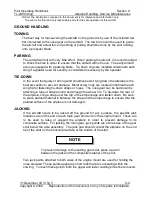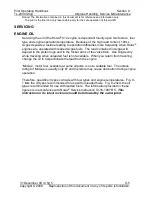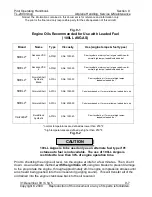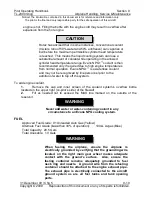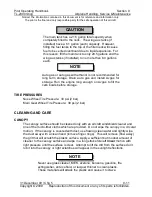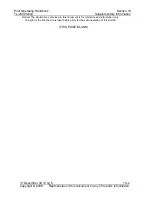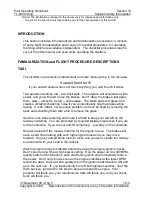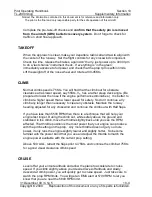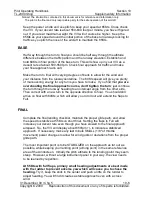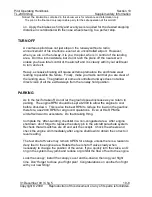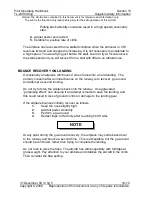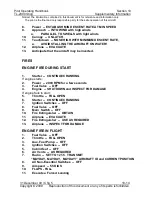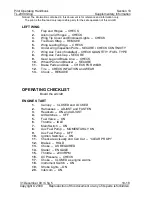
Pilot Operating Handbook
Section 10
TL-2000
Sting
Supplementary Information
Notice! The information contained in this document is for reference and information only.
The pilot is the final and only responsible party for the safe operation of this aircraft.
31 December 09 / Chg 5
10-3
Copyright © 2009 Reproduction of this document or any of its parts is forbidden.
INTRODUCTION
This section includes informal advice and familiarization procedures; a mention
of some flight characteristics and a copy of checklist procedures, for operating
the Sting which are available in Appendix A. The checklist procedures may be
cut out from this manual and used while operating the airplane.
FAMILIARIZATION and FLIGHT PROCEDURE DESCRIPTIONS
TAXI
The visibility in all directions allows clear and safe maneuvering in the taxi area.
HANGAR RASH NOTE:
If your aircraft shadow does not touch anything, you won’t touch it either.
Taxi speeds should be low - at a brisk walk. The airplane will accelerate at idle
power, and you will need to use the brakes. Don't ‘drag’ the brakes; just apply
them, slow – almost to a stop -- and release. The brake pads will ‘glaze’ and
create a vibration/chattering noise if you unintentionally ride the brakes while
taxiing. It is an irritant, not a serious problem, and can be fixed by removing the
pads and scrubbing them with a file to remove the glaze.
Use the nose wheel steering and make it a habit to keep your aircraft on the
taxiway centerline. You are protected by required taxiway clearances if you are
on the centerline. If you are not and hit something….just stay on the centerline.
Stop well ahead of the runway hold line for the engine run-up. The brakes will
have a hard time holding with such high engine thrust and you may move
forward. So give yourself some room to move and you won’t violate the runway
environment with your head in the cockpit.
Wait for engine temps to stabilize before the doing the engine ignition checks.
Don’t spend a long time at high power setting. Run the power up to 4,000 RPM,
quickly switch off and back on each electronic ignition and immediately reduce
the power. Don’t hurry but as soon as the engine stabilizes at the lower RPM
record the data. Look at it and quickly return the ignition switch back to ON and
go to the next one. IF you inadvertently turn off both ignition switches, don’t flip
them back on, just wait for the prop to stop and restart the engine. Your
propeller will thank you, your maintenance folks will thank you, and your check
book will thank you.




